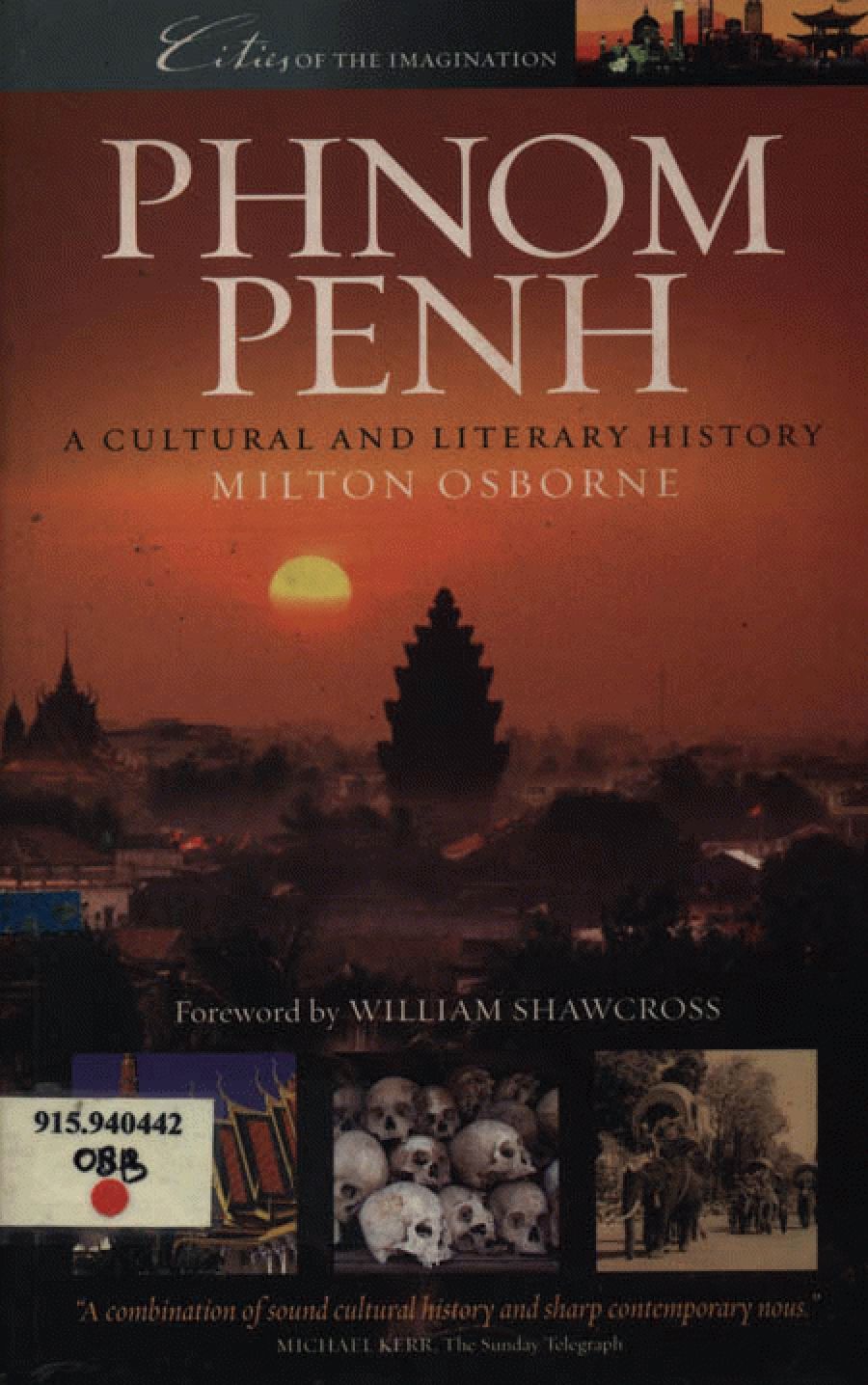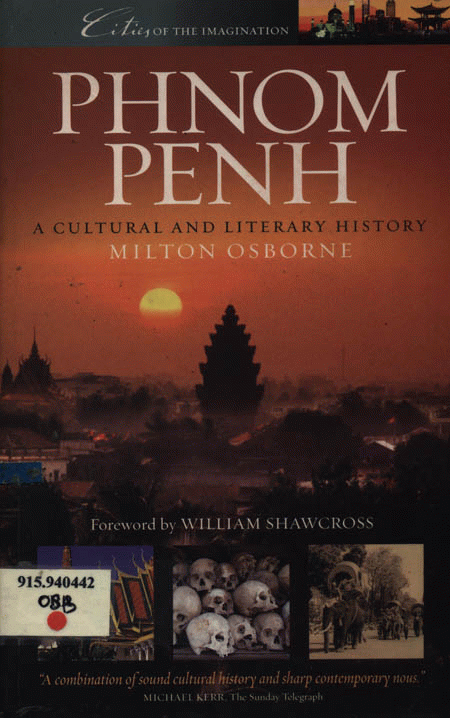
- Free Article: No
- Custom Article Title: No certain answers
- Review Article: Yes
- Article Title: No certain answers
- Online Only: No
- Custom Highlight Text:
Milton Osborne began his observations of Phnom Penh as a junior Australian diplomat from 1959 to 1961. Norodom Sihanouk presided over a town influenced by a powerful French cultural presence, a buoyant Chinese commercial sector, Vietnamese clerks, Cambodian civil servants, teachers and bonzes, and free-spending Americans. Osborne returned in April 1966 as a Cornell graduate student, then each year until 1971, the year after Sihanouk was deposed and four years before the terrible entry of Pol Pot’s forces. For a short time during Vietnam’s occupation of Cambodia, he worked as a consultant to the United Nations High Commissioner for Refugees on the Thai border, and in 1981 returned to a run-down city full of squatters. In subsequent years, Osborne saw a dispirited and exhausted city regain its self-confidence and some of its joie de vivre, in spite of a government (like others in Asia), rampant with corruption and intolerant of challenges to its power.
- Book 1 Title: Phnom Penh
- Book 1 Subtitle: a cultural and literary history
- Book 1 Biblio: Signal Books, $30 pb, 248 pp
- Book 1 Cover Small (400 x 600):

- Book 1 Cover (800 x 1200):

Osborne’s account of Phnom Penh starts in the fourteenth century. Originally a riverine trading post between Angkor and China called Chatomuk, Phnom Penh was said to have derived its name from a woman named Penh, who pulled to shore from the flooded Mekong a koki tree traditionally planted by royalty or Buddhist monks. She was startled to find wedged in its branches four statues of the Buddha and one of Vishnu. With the help of villagers, Penh turned a nearby hillock into a hill, or phnom, and constructed a stupa on top to house the Buddha relics and a separate chapel for Vishnu. Thus became Phnom Penh, the ‘Hill of Lady Penh’. The restless Khmer Court decamped from Angkor, and after some false starts settled in Phnom Penh at the end of 1865.
Osborne examines the little-known but intriguing influence in Cambodia of Spanish and Portuguese missionaries in the sixteenth century. Unlike the priests accompanying Cortés and Pizarro who were able to convert Incas and Aztecs in the New World, these proselytisers found Khmer Buddhists almost completely unimpressed by Christianity. But they opened the way for a motley crew of Iberian adventures to come to Phnom Penh via the Philippines. After briefly exerting disproportionately powerful commercial and political influence on the Khmer Court, the adventurers overreached themselves and were put to the sword by Malays and Chinese in 1599.
In the early seventeenth century, Dutch traders came, but were all massacred in 1643. From then until the mid nineteenth century, Cambodia remained essentially a theatre of rivalry between Thai and Vietnamese forces until first King Ang Duang, and then Norodom I asked for French intervention. Much intrigue and jockeying for position and influence with the Royal Khmer Court followed. The French were keen to build on their colonial base in Tonkin and Cochinchine, not least to counter what they erroneously saw as growing British influence in Bangkok.
Osborne recounts how around the mid nineteenth century the Palace in Phnom Penh was remarkably cosmopolitan. Relations with the French were generally free and easy, unless the latter demanded administrative changes. In 1884 the French demanded control over Khmer Customs, backing their claim with three gunboats from Saigon. They overplayed their hand and the Cambodians rebelled throughout the country, leaving only Phnom Penh under French control. But the French recovered, and by the time of Norodom’s death in 1904 the Résident Supérieur, Huyn de Vernéville, had much influence throughout the ‘protectorate’.
One of the bonuses of this book is Osborne’s scholarly explanation of how and why Phnom Penh grew. He gives a running account of the architectural growth of the city, especially but not exclusively the efflorescence of significant buildings constructed between 1904 and the advent of the Vichy French régime following Germany’s occupation of France in May 1940. Another bonus is his description of annual festivals that remain a rich part of Khmer culture, such as New Year in April, ploughing the Sacred Furrow in May, the Water festival at the end of the rainy season, and Honouring the Dead in October. There is also a compendium of obscure Western literature about Phnom Penh in the 1930s – useful for readers who would like to put flesh on the bones of the richest period in France’s colonial past: the romances, the intrigues, daily life as seen with the jaded gaze of French flâneurs, as well as by serious-minded historians.
Osborne describes 1939 to 1953 as ‘watershed years’, including the sterile period between 1941 and Japan’s coup de main in 1945, when the country was nominally run by Admiral Decoux for the Vichy French, while the Japanese expropriated Cambodian products such as fish oil and kapok for export to Japan. I would have liked to see here more details about the Japanese and their motives, and their relations with Cambodians.
Osborne describes Sihanouk’s reign from 1953 to 1970 as a Golden Age, at least at the beginning. Shrewdly abdicating the throne in 1955 so he could participate fully in politics, Sihanouk encouraged wide support for his Peoples’ Socialist Community and the Royal Cambodian Socialist Youth movement. He had the political élite and the growing middle class at his beck and call, support from China, and aid from both the United States and the Soviet Union.
Like a court dancer, Sihanouk skilfully avoided embroilment in the growing civil war in Vietnam. But he stumbled when he refused further American aid in 1963, broke off diplomatic relations with that country in 1965, and turned a blind eye to Vietnamese military encroachment into eastern Cambodia. After serpentine political manoeuvrings by General Lon Nol and Prince Sirik Matak, Sihanouk was deposed in 1970. His usurpers in turn presided for four years over an increasingly desperate situation exacerbated by clandestine and illegal American bombings in eastern Cambodia and growing certainty of defeat at the hands of the Khmer Rouge.
Osborne frankly admits that he has no easy explanations for the brutal actions of the Khmer Rouge (KR) following their occupation of Phnom Penh in April 1975. These included the peremptory and indiscriminate evacuation of the city, and the subsequent pitiless torture and murder of men, women and children at Tuol Sleng, Choeung Ek and other killing fields. Although KR foot soldiers were mainly youthful illiterate rural poor who resented the rich in Phnom Penh, their leaders were educated men. The evacuation was not a spur of the moment response to overcrowding, fear of American bombing raids or reprisals by ‘US lackeys’, but was planned well before the KR came into Phnom Penh. Perhaps it was driven as much as anything by unalloyed vengeance. Certainly, KR insistence on victims writing confessions that were meticulously filed at Tuol Sleng, betrayed a paranoid obsession. Yet such fury against the citizenry did not extend to a blind urge to destroy the city. Some significant buildings in Phnom Penh, including the Catholic Cathedral, were destroyed but many others, including the Royal Palace, were spared.
Vietnam occupied Cambodia from January 1979 until the United Nations Transitional Administration in 1992. Osborne concedes that, as well as getting Pol Pot off their own backs, the Vietnamese freed the country from his murderous grasp. But he suggests that the Vietnamese had territorial designs and only withdrew because of international opposition and the collapse of the Soviet Union. I disagree with this assessment. Vietnamese leaders in Hanoi in the mid 1980s told me repeatedly that their occupation was defensive and temporary. It was bleeding the Vietnamese dry, and they left with considerable relief.
As for the future of this fragile post-conflict society, Osborne has mixed views. Corruption has almost reached 1960s levels. There are elections like the ones held at the time of writing this review, but Prime Minister Hun Sen had little credible opposition. Economic inequality is growing, as is systemic unemployment among school leavers. But there has been victory of sorts against an Aids epidemic, and many young people, especially those associated with domestic NGOs, bravely speak out against the worst excesses of corruption. Maybe wealth from recently discovered offshore oil deposits can make a difference. But Osborne realistically concludes that there is no certain answer to that question, which is itself a sad but realistic reflection on life in contemporary Phnom Penh.


Comments powered by CComment